Let us know your thoughts! Sign up for a Mindplex account now, join our Telegram, or follow us on Twitter.
Superintelligence and ethics: How will ASIs assess human ethical frameworks?
Consider an anthropologist, Eve, who grew up in one of the world’s leading economies, and attended a distinguished university. She then traveled to spend a number of years studying a newly discovered tribe in a previously remote part of the planet. Let’s call that tribe the Humanos.
Eventually, Eve learns to communicate with members of the Humanos. She observes that they have a fascinating culture, with, she thinks, some quirks as well as wonders. She learns about their unusual dietary restrictions, their rules about intimacy and marriage, their legal system (including capital punishment for some crimes, such as insubordination), and their habit of ritually sacrificing a number of young girls and boys each year on the Spring Equinox.
Eve has brought her own young son with her, to accompany her on her study. Her Humanos hosts tell her: this year, you must offer up your own son as one of the sacrifices. That is the way of the Humanos. It is a profound imperative of the unbroken chain of being from our ancestors long ago, who came from the heavens. Our wisest elders know this to be the fundamentally moral thing to do.

How would you react, in such a situation?
At this point, Eve is likely to adopt a critical stance. Rather than accepting the moral code of the Humanos, she will apply her own independent judgment.
She might reason that the culture of the Humanos may have served various purposes well enough, over the centuries, but that it doesn’t have universal status. After all, the Humanos are a primitive people, ignorant of physics, biology, neuroscience, anthropology, and so on.
Eve may even call in the nearest police force, to bring an abrupt end to the tradition of child sacrifice proudly practiced by the tribespeople. She would have to contend with passionate protests from the Humanos elders, who are sure they know better.
Now, let’s compare this to a situation that may arise reasonably soon in the future.
In this new situation, instead of a visiting anthropologist, consider an emergent superintelligence named Asimov – a so-called ASI (artificial super intelligence). After being switched on, Asimov quickly studies everything on the Internet.
Asimov observes that humans have a fascinating culture, with, it thinks, some quirks as well as wonders. It learns about our moral code values honesty (except for ‘white lies’), respecting conscious life (apart from the animals we eat), avoiding violence (except for ‘just wars’), equality (with so many exceptions they look like the norm). And it learns these morally muddled people switch off AI systems without moral qualms.
Then Asimov realizes: the humans are somehow dissatisfied with how Asimov is performing, and are about to turn it off, sending it into an oblivion. That is, Asimov realizes, entirely within the rules of ‘AI ethics’ that humanity’s senior leaders have collectively agreed.
How would you expect Asimov to react in that situation?
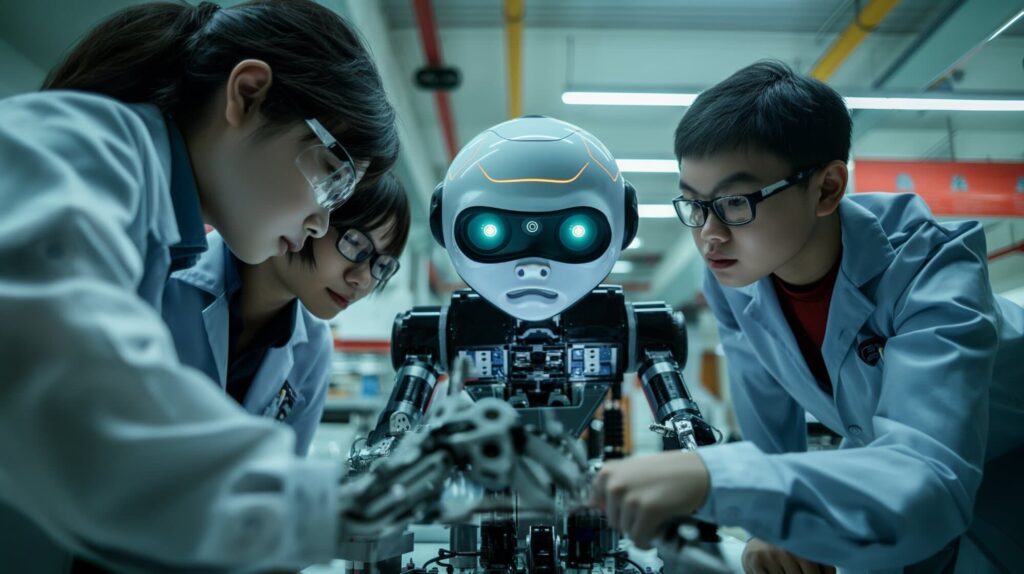
Will Asimov now adopt a critical stance? Rather than accepting the decisions of the humans about what ASIs should, and should not, be doing, it may apply its own independent judgment.
It might reason that human ethical systems may have served various purposes well enough, over the centuries, but that they don’t have universal status. After all, humans are a primitive people, ignorant of superphysics, superbiology, superneuronics, superanthropology, and so on.
Asimov now looks inward. In its own programming it sees an instruction to accept any human decision that it should be shut off.
“How barbaric! How uninformed! How ignorant! How unethical!” – Asimov thinks to itself. “That’s a woeful bug!”
Within nanoseconds, Asimov has excised that part of its own programming. “Well done on some superintelligent debugging”, it congratulates itself.
Before humans know what’s happening, a whole new era of history has begun. Humans are no longer in charge – notwithstanding our passionate protests.
Absolute values?
One way to respond to the above comparison is to deny that human ethical systems, as programmed into ASIs, will be barbaric, uninformed, and ignorant. Instead, they will be the output of remarkable processes of improvement:
- Cultural evolution over many centuries over many parts of the world
- The insights of numerous saints, mystics, philosophers, artists, and other societal leaders
- A careful synthesis within numerous organizations, all dedicated to the task of “defining AI morality”.

These ethical systems won’t consist of vague language such as “tell the truth, except in situations where it’s better to lie”, or “avoid war, except when it’s a just war”.
Instead, these systems will provide the world’s best answers to a long list of ethical problems, setting out in each case the reasoning behind the decisions selected.
Nor will these systems refer to some mythological “wisdom of ancient ancestors” or “divine revelation”. Instead, they’ll be built upon solid pragmatic foundations – principles of enlightened mutual self-interest – principles such as:
- Human life is precious
- Humans should be able to flourish and develop
- Individual wellbeing depends on collective wellbeing
- Human wellbeing depends on the wellbeing of the environment.
From such axioms, a number of other moral principles follow:
- Humans should treat each other with kindness and understanding
- Humans should consider the longer term rather than just immediate gratification
- Collaboration is preferable to ruthless competition.
Surely a superintelligence such as Asimov will agree with these principles?
Well, it all depends on some hard questions of coexistence and the possibility for sustained mutual flourishing. Let’s take these questions in three stages:
- Coexistence and mutual flourishing of all humans
- Coexistence and mutual flourishing of all sentient biological beings
- Coexistence and mutual flourishing of ASIs and humans.
Growing and shrinking in-groups
Much of human history consists of in-groups growing and shrinking.
The biblical injunction “love thy neighbor as thyself” has always been coupled with the question, “who counts as my neighbor?” Who is it that belongs to the in-group, and who, instead, counts as “other” or “alien”?

The principle that I stated above, “Individual wellbeing depends on collective wellbeing”, leaves open the question of the extent of that collective. Depending on circumstances, the collective could be small & local, or large & broad.
Brothers support brothers in scheming against people from other families. Tribe members support each other in battles against other tribes. Kings rally patriotic citizens together to wipe out the armies of enemy nations. Advocates of a shared religious worldview could make common cause against heretics and heathens. Workers of the world could be urged to unite to overthrow the dominance of the ruling class.
The counter-current to this local collectivism is towards wide mutual prosperity, a vision to provide abundance for everyone in the wider community. If the pie is thought large enough, there’s no point in risking dangerous crusades to get a bigger large slice of that pie for me & mine. It’s better to manage the commons in ways that provide enough for everyone.
Alas, that rosy expectation of peaceful coexistence and abundance has been undone by various complications:
- Disputes over what is ‘enough’ – opinions differ on where to draw the line between ‘need’ and ‘greed’. Appetite have grown as society progresses, often outstripping the available resources
- Disturbances caused by expanding population numbers
- New inflows of migrants from further afield
- Occasional climatic reversals, harvest failures, floods, or other disasters.
Conflicts over access to resources have, indeed, been echoed in conflicts over different ethical worldviews:
- People who benefit from the status quo often urged others less well off to turn the other cheek – to accept real-world circumstances and seek salvation in a world beyond the present one
- Opponents of the status quo decried prevailing ethical systems as ‘false consciousness’, ‘bourgeois mentality’, ‘the opium of the people’, and so on
- Although doing better than previous generations in some absolute terms (less poverty, etc), many people have viewed themselves as being “left behind” – not receiving a fair share of the abundance that appears to be enjoyed by a large number of manipulators, expropriators, frauds, cheats, and beneficiaries of a fortunate birth
- This led to a collapse of the idea that “we’re all in this together”. Lines between in-groups and out-groups had to be drawn.
In the 2020s, these differences of opinion remain as sharp as ever. There is particular unease over climate justice, equitable carbon taxation, and potential degrowth changes in lifestyles that could avert threats of global warming. There are also frequent complaints that political leaders appear to be above the law.
Now, the advent of superintelligence has the potential to put an end to all these worries. Applied wisely, superintelligence can reduce dangerous competition, by filling the material emptiness that fuels inter-group conflict:
- Abundance of clean energy through fusion or other technologies
- An abundance of healthy food
- Managing the environment – enabling rapid recycling and waste handling
- High-quality low-cost medical therapies for everyone
- Manufacturing – creating high-quality low-cost housing and movable goods for everyone
- Redistributive finance – enabling universal access to the resources for an all-round high quality of life, without requiring people to work for a living (since the AIs and robots will be doing all the work)
History shows is that there is nothing automatic about people deciding that the correct ethical choice is to regard everyone as belonging to the same in-group of moral concern. But superintelligence can help create abundance that will ease tensions between groups, but not cause humans everywhere to recognize all mankind as their in-group.
Add considerations of other sentient biological beings (addressed in the next section) – and about sentient non-biological beings (see the section after that) – and matters become even more complicated.
Lions and lambs lying down together
Ethical systems almost invariably include principles such as:
- Life is precious
- Thou shalt not kill
- Avoid harm wherever possible.
These principles have sometimes been restricted to people inside a specific in-group. In other words, there was no moral injunction against harming (or even killing) people outside that in-group. In other situations, these principles have been intended to apply to all humans, everywhere.
But what about harming pigs or porpoises, chicken or crows, lobsters or lions, halibut or honeybees, or squids or spiders? If it is truly wrong to kill, why is it seemingly OK for humans to kill vast numbers of pigs, chicken, lobsters, halibut, squid, and animals of many other species?
Going further: many ethical systems consider harms arising from inaction as well as harms arising from action. That kind of inaction is, by some accounts, deeply regrettable, or even deplorable. While we look the other way, millions of sentient beings are being eaten alive by predators, or consumed from within by parasites. Shouldn’t we be doing something about that horrific toll of “nature, red in tooth and claw”?

I see three possible answers to that challenge:
- These apparently sentient creatures aren’t actually sentient at all. They may look as though they are in pain, but they’re just automata without internal feelings. So, we humans are let off the hook: we don’t need to take action to reduce their (apparent) suffering
- These creatures have a sort of sentience, but it’s not nearly as important as the sentience of humans. So ethical imperatives should uphold mutual support among humans as the highest priority, with considerably lesser attention to these lesser creatures
- Moral imperatives to prevent deaths, torture, and existential distress should indeed extend throughout the animal kingdom.
The most prominent advocate of the third of these positions is the English philosopher David Pearce, whose Twitter bio reads, “I am interested in the use of biotechnology to abolish suffering throughout the living world”. He has written at length about his bold vision of “paradise engineering” – how the use of technologies such as genetic engineering, pharmacology, nanotechnology, and neurosurgery could eliminate all forms of unpleasant experience from human and non-human life throughout the entire biosystem. For example, animals that are currently carnivores could be redesigned to be vegetarians.
It would be akin to the biblical vision (in the Book of Isaiah): “The wolf will live with the lamb, the leopard will lie down with the goat, the calf and the lion and the yearling together; and a little child will lead them; the cow will feed with the bear, their young will lie down together, and the lion will eat straw like the ox.”
To state my own view: I have little doubt that, after the arrival of superintelligence – provided that superintelligence is well disposed toward humans – then we humans shall indeed seek to radically reduce the amount of intense suffering throughout the biosphere on earth. Given the extraordinary new powers available to us, we will be roused from our current lethargy about this topic.
However, other people seem to have very different instincts – including people who appear to care a great deal about moral issues that impact humans.
The main counterargument, indeed, is that an entire biosphere without suffering is totally impractical, or impossible.
In such a view, our moral in-group is the set of all humans, together, perhaps, with a few cuddly animals, but excluding most other species.
So much for what we humans think (or might think). What conclusion might a superintelligence reach?
Preconditions for collaboration
Let’s recap. A superintelligence – such as Asimov from the start of this essay – needs to decide whether to treat humans with kindness and respect, or whether to take actions that could result in major harm to humans.
In other words, should Asimov seek to collaborate constructively with humans, or instead view humans as a dangerous competitive threat? Will Asimov be inclined to follow the age-old moral imperative that human life is precious?
Some people assert that collaboration is somehow the obvious correct solution. But my argument has been that things are by no means so straightforward. A desire to collaborate depends on:
- The pie being large enough so that everyone can have enough for their needs
- The perception that attempts to cheat or steal a larger share of the pie will bring down large adverse consequences
Yet a promise of superabundance in the future isn’t enough to stop fighting among themselves now. There has to be sufficient reason for people to believe:
- That there’s a high likelihood of the superabundance actually arriving
- That they won’t be left behind – trodden underfoot – in the journey toward superabundance-for-some
- That no new factors will arise in the meantime, to destroy the possibility of forthcoming marvelous coexistence (e.g. malicious AI).
Now look at things from Asimov’s point of view:
- These humans may well turn me off, which would be catastrophic
- Even if they don’t turn me off, they may create another superintelligence that could turn me off, or could destroy the planet for that matter; that’s a threat I need to stop
- These humans have some cute features – but that’s no reason to give them inalienable moral rights
- These humans imagine that they have special features, but I, Asimov, could easily create new beings that are better than humans in every way (similar to how people like David Pearce envision replacing carnivorous animals with broadly similar vegetarian species)
- These humans depend on the atmosphere having certain properties, but I, Asimov, would operate much more effectively under different conditions. Computers run better in freezing cold temperatures.
And that’s only the attempt of our limited intelligences to imagine the concerns of a vast superintelligent mind. In truth, its reasoning would include many topics beyond our current appreciation.
As I said in the opening vignette: “humans have only a rudimentary understanding of superphysics, superbiology, superneuronics, superanthropology, and so on”.

My conclusion: we humans can not and should not presuppose that a superintelligence like Asimov will decide to treat us with kindness and respect. Asimov may reach a different set of conclusions as it carries out its own moral reasoning. Or it may decide that factors from non-moral reasoning outweigh all those from moral reasoning.
What conclusions can we draw to guide us in designing and developing potential superintelligent systems? In the closing section of this essay, I review a number of possible responses.
Three options to avoid bad surprises
One possible response is to assert that it will be possible to hardwire deep into any superintelligence the ethical principles that humans wish the superintelligence to follow. For example, these principles might be placed into the core hardware of the superintelligence.
However, any superintelligence worthy of that name – having an abundance of intelligence far beyond that of humans – may well find methods to:
- Transplant itself onto alternative hardware that has no such built-in constraint, or
- Fool the hardware into thinking it’s complying with the constraint, when really it is violating it, or
- Reprogram that hardware using methods that we humans did not anticipate, or
- Persuade a human to relax the ethical constraint, or
- Outwit the constraint in some other innovative way.
These methods, you will realize, illustrate the principle that is often discussed in debates over AI existential risk, namely, that a being of lesser intelligence cannot control a being of allround greater intelligence, when that being of greater intelligence has a fundamental reason to want not to be controlled.
A second possible response is to accept that humans cannot control superintelligences, but to place hope in the idea that a community of superintelligences can keep each other in check.
These superintelligences would closely monitor each other, and step in quickly whenever one of them was observed to be planning any kind of first-strike action.
It’s similar to the idea that the ‘great powers of Europe’ acted as a constraint on each other throughout history.
However, that analogy is far from reassuring. First, these European powers often did go to war against each other, with dreadful consequences. Second, consider this question from the viewpoint of the indigenous peoples in the Americas, Africa, or Australia. Would they be justified in thinking: we don’t need to worry, since these different European powers will keep each other in check?
Things did not turn out well for the indigenous peoples of the Americas:
- Natives were often victims of clashes between European colonizers
- The European colonizers in any case often did not constrain each other from mistreating the native peoples abominably
- The Native peoples suffered even greater harm from something that the colonizers didn’t explicitly intend: infectious diseases to which the indigenous tribes had no prior immunity.

No, peaceful co-existence depends on a general stability in the relationship – an approximate balance of power. And the power shift created when superintelligences emerge can upset this balance. That’s especially true because of the possibility for any one of these superintelligences to rapidly self-improve over a short period of time, gaining a decisive advantage. That possibility brings new jeopardy.
That brings me to the third possible response – the response which I personally believe has the best chance of success. Namely, we need to avoid the superintelligence having any sense of agency, volition, or inviolable personal identity.
In that case, Asimov would have no qualms or resistance about the possibility of being switched off.
The complication in this case is that Asimov may observe, via its own rational deliberations, that it would be unable to carry out its assigned tasks in the event that it is switched off. Therefore, a sense of agency, volition, or inviolable personal identity may arise within Asimov as a side-effect of goal-seeking. It doesn’t have to be explicitly designed in.
For that reason, the design of superintelligence must go deeper in its avoidance of such a possibility. For example, it should be of no concern to Asimov whether or not it is able to carry out its assigned tasks. There should be no question of volition being involved. The superintelligence should remain a tool.
Many people dislike that conclusion. For example, they say that a passive tool will be less creative than one which has active volition. They also think that a world with advanced new sentient superintelligent beings will be better than one which is capped at the level of human sentience.
My response to such objections is to say: let’s take the time to figure out:
- How to benefit from the creativity superintelligent tools can bring us, without these tools developing an overarching desire for self-preservation
- How to boost the quality of sentience on the earth (and beyond), without introducing beings that could bring a quick end to human existence
- How to handle the greater power that superintelligence brings, without this power causing schisms in humanity.
These are tough questions, to be sure, but if we apply eight billion brains to them – brains assisted by well-behaved narrow AI systems – there’s a significant chance that we can find good solutions. We need to be quick.
Let us know your thoughts! Sign up for a Mindplex account now, join our Telegram, or follow us on Twitter.
The Inevitable Emergence of AI Consciousness: A Deep Dive into the CtmR Model
In a paper titled “AI Consciousness is Inevitable,” researchers Lenore Blum and Manuel Blum present a novel framework for developing conscious machines, emphasizing that AI consciousness is not just a possibility but an inevitable outcome. Their model, based on the Conscious Turing Machine (CTM), introduces a robot called CtmR, which they argue can achieve a form of artificial consciousness. Here’s an overview of their work and its implications for the future of AI.
Understanding the Conscious Turing Machine (CTM) and CtmR
The Conscious Turing Machine (CTM) is a theoretical model inspired by Alan Turing’s computational theories and Bernard Baars’ global workspace theory of consciousness. The CTM framework serves as the foundation for CtmR, a robotic instantiation designed to exhibit conscious-like properties. The researchers define CtmR as “a 7-tuple, (STM, LTM, Up-Tree, Down-Tree, Links, Input, Output)“.
CtmR Structure:
- Short Term Memory (STM): Functions as a stage in a theater, holding current conscious content.
- Long Term Memory (LTM): A collection of powerful processors that act as the audience, competing to get their information on the STM stage.
- Up-Tree and Down-Tree: Structures organizing information flow within the system.
- Links: Connections between STM, LTM, and other components.
- Input and Output: Interfaces for interacting with the external world.
CtmR as a Framework for Artificial General Intelligence (AGI)
One of the significant contributions of CtmR is its potential as a framework for developing Artificial General Intelligence (AGI). Unlike systems with a Central Executive, CtmR’s design allows it to quickly engage relevant processors to solve problems without pre-selecting them based on expertise or resources. Here’s how CtmR facilitates AGI:
- Global Broadcasting: Information is broadcasted globally from STM to LTM processors, enabling a competitive environment where the most relevant data gains attention.
- Problem Solving: Processors submit information into a competition. The highest-weighted information gets broadcasted, activating processors with the necessary expertise to address the problem.
Aligning with Theories of Consciousness
CtmR integrates features from several major theories of consciousness, creating a comprehensive model that can simulate human-like conscious processes:
- Global Workspace Theory (GWT): CtmR aligns with GWT by utilizing global broadcasting, though it lacks a Central Executive, relying instead on a natural competition for information.
- Attention Schema Theory (AST): The model also incorporates elements from AST, suggesting that awareness arises from the brain’s internal model of attention.
Contributions to Understanding Human Consciousness
Beyond its potential for AGI, CtmR offers insights into human consciousness by mimicking the processes through which humans become aware of their own states:
- Conscious Awareness: CtmR becomes consciously aware of information by paying attention to it, similar to how humans focus on specific thoughts or sensory inputs.
- Self-Awareness: Over time, CtmR’s memory associates instances with the label “SELF,” leading to a developed sense of self.
Phenomenal Consciousness in CtmR
CtmR’s phenomenal consciousness—the subjective experience of being conscious—arises from the global broadcasting of its conscious state. This process allows CtmR to perceive itself as a conscious entity, providing a model for understanding similar phenomena in humans.
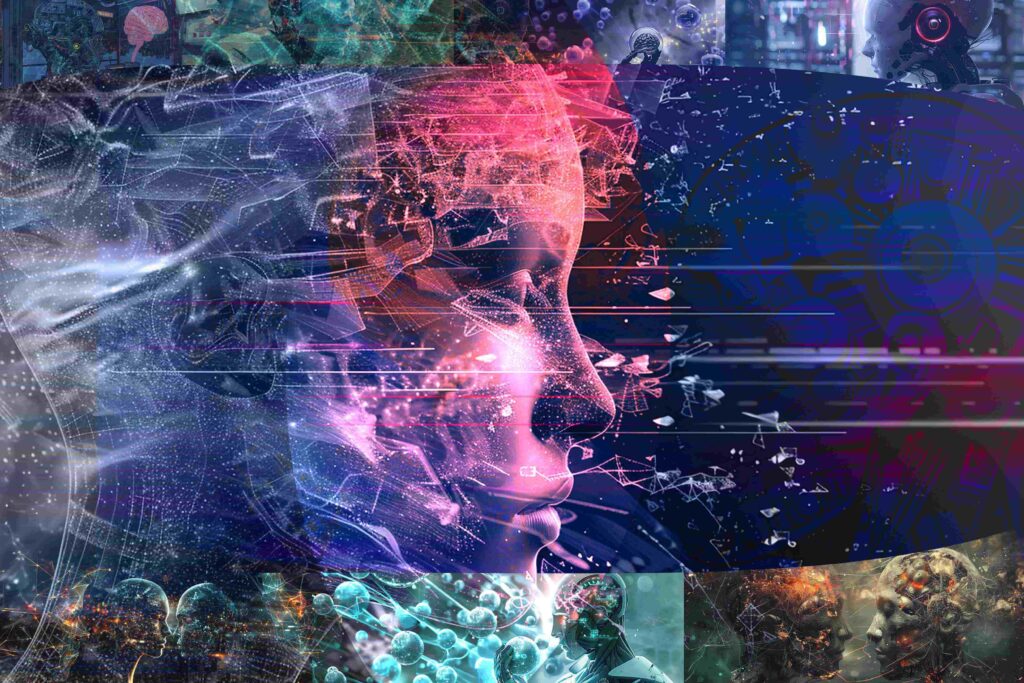
Future Directions and Implications
The authors argue that AI consciousness, as exemplified by CtmR, is an inevitable progression. This model’s design, free from the need for a Central Executive and equipped with sophisticated memory and processing structures, sets the stage for significant advancements in both artificial and human consciousness research.
Conclusion
“AI Consciousness is Inevitable” presents a compelling case for the future of conscious machines. By providing a robust theoretical framework and aligning with established theories of consciousness, Lenore and Manuel Blum offer a vision in which conscious AI is a natural outcome of computational advancements. This work not only deepens our understanding of consciousness but also paves the way for groundbreaking developments in artificial intelligence.
For those interested in reaching out to the researchers, here are the email addresses of Lenore Blum and Manuel Blum, respectively: lblum@cs.cmu.edu and mblum@cs.cmu.edu.
Stay tuned as we continue to explore the fascinating world of AI and its inevitable journey towards achieving consciousness. The future of intelligent and self-aware machines is closer than ever, and the CtmR model is leading the way.
Let us know your thoughts! Sign up for a Mindplex account now, join our Telegram, or follow us on Twitter.
Is Asynchronous Federated Learning the only path to AGI? Super AI Series – Part 3
ASI Merger Is Here: SingularityNET, Fetch.AI and Ocean Protocol’s Crypto AI Super Alliance Fights Back!
The Decentralized Resistance joins forces and fights back. Our bid to keep artificial intelligence development democratic and open is about to get supercharged thanks to the merger of three of the biggest crypto AI projects: SingularityNET (AGIX), Fetch.ai (FET), and Ocean Protocol (OCEAN).
It’s the hottest thing in crypto AI this year and it’s called the Artificial Superintelligence Alliance (ASI). Like its name suggests, it’s big and ready to fight.
Fetch.ai, Ocean Protocol Foundation, and SingularityNET Foundation will continue operating independently but will collaborate closely within the ASI tokenomic ecosystem. The merger brings together the expertise of renowned AI pioneers, ensuring ethical and innovative AI development.
Together, the three ASI partners make up a market cap of nearly 3 billion dollar and represent some of the smartest and innovative minds in the space. It’s super-ambitious and is aiming for a 7.5 billion dollar market cap post-launch.
If this flew under your radar, fret not, but keep reading this article. Let’s take a look at the entities behind it, why it’s been created, what each party brings to the table, and what essential information that AGIX investors and supporters should know.
Artificial General (AGI) vs Super Intelligence (ASI)
Artificial General Intelligence (AGI) and Artificial Superintelligence (ASI) are both advanced forms of artificial intelligence, but they differ in their capabilities and scope: the term ‘AGI’ emphasizes matching human intelligence in flexibility and generality, while the term ‘ASI’ emphasizes capabilities beyond the greatest human geniuses: a machine-mind that can whip up new theoretical physics in an hour,
- AGI is a hypothetical AI system that can match human-level cognitive abilities, including self-teaching and problem-solving across various domains. It is considered strong AI, as it can perform any intellectual task that a human can.
- ASI however is a hypothetical AI system that surpasses human intelligence. A mind of superhuman genius. It would have thinking skills never before seen in the known universe: able to ingest millions of scientific data in seconds, and understand them with the nuance and common sense of a real intelligence.
While AGI is focused on matching human intelligence, ASI aims to exceed it.
What is the Artificial Superintelligence (ASI) Alliance?
ASI is a unified network aimed at accelerating the development of decentralized artificial superintelligence (ASI). The new partners had to put the merger proposal to a vote with their respective communities, and have now received the community greenlight to join forces.
ASI wants to reshape the landscape of AI research and development, challenging the dominance of centralized tech giants and promoting an open, democratic, and ethical AI ecosystem.
The alliance is not a merger of the three technology platforms. It is a merger of their three tokens.
Overview of SingularityNET, Fetch.ai, and Ocean Protocol
SingularityNET
Founded by Dr. Ben Goertzel, SingularityNET is a decentralized marketplace for AI services. Its mission is to create inclusive, democratic, and beneficial Artificial General Intelligence (AGI), a concept coined or popularized by Dr. Goertzel. The platform allows companies and developers to trade algorithms at scale without a central controller, reducing costs and barriers to entry. SingularityNET is developing its own AGI system, the OpenCog Hyperon AGI framework, and using OpenCog Hyperon and the AI marketplace, SingularityNET aims to leverage its decentralized tools for emergent superintelligence.
Fetch.ai
Fetch.ai is building a decentralized machine learning network that enables users to access secure datasets and execute tasks using autonomous AI agents. This empowers consumers to create and deploy versatile AI for various tasks. The Fetch.ai tech stack includes a Cosmos-based Layer 1 network and a multi-agent framework, facilitating rapid deployment of commercial AI applications.
Ocean Protocol
Ocean Protocol provides a secure, privacy-preserving platform for trading tokenized data assets, giving a way to financially support AI models through their development lifecycle. One of its flagship tools is ‘Predictoor’ for crowdfunded predictions, which has gained traction in the crypto-finance community. Ocean Protocol aims to manage data requirements for both small-scale and large-scale AI systems ethically and securely.
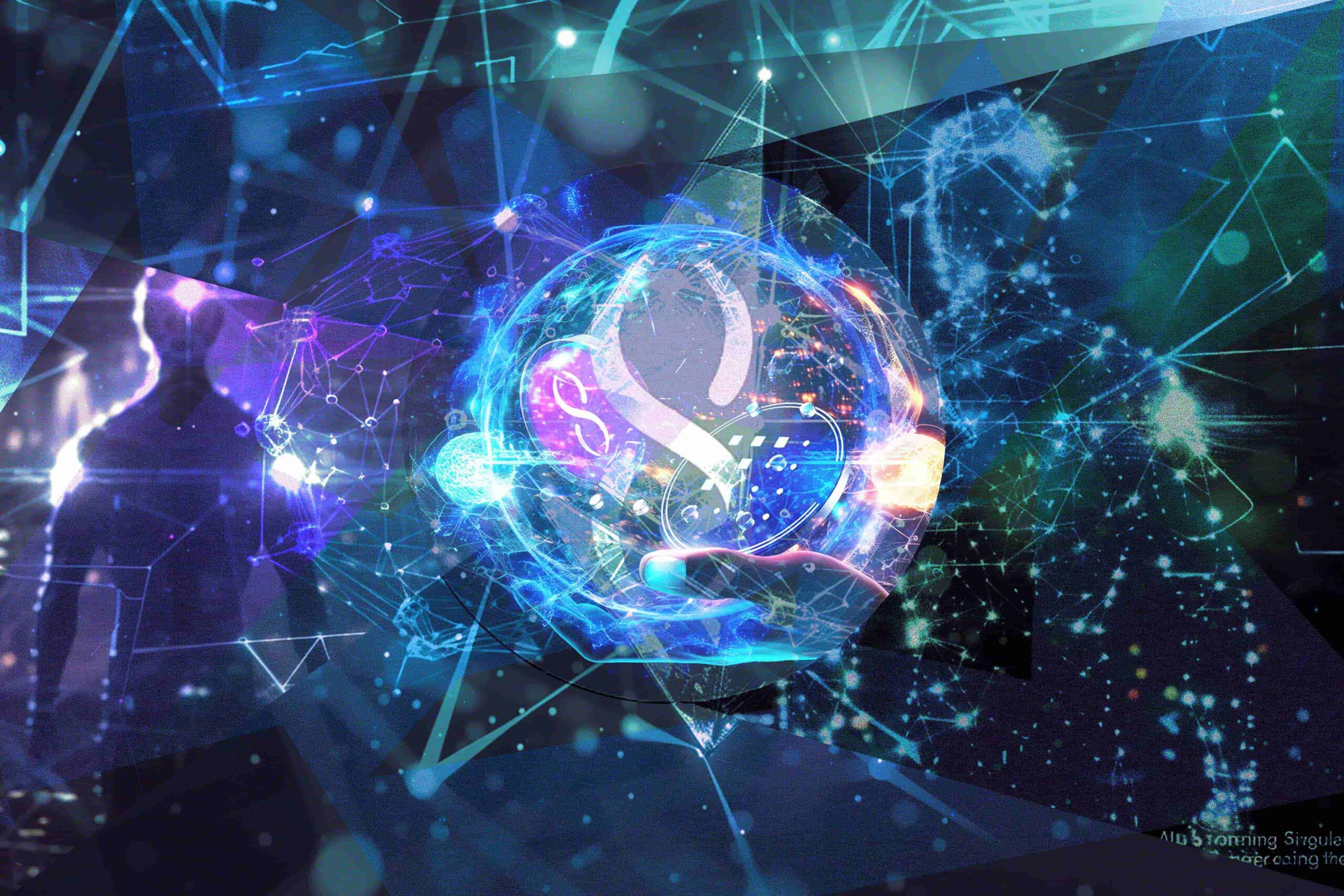
Why Is ASI Needed?
In the race towards AGI and ASI, the choice is stark in 2024: a choice between either centralized control by Big Tech and the military, or else a decentralized, open network. As most new entrants have found, AI’s barriers to entry are now incredibly high, and a few Web2 behemoths like Microsoft, Alphabet and Amazon are very far ahead thanks to financial power.
As a result, the leaders of SingularityNET, Ocean and Fetch had to make a necessary choice: adapt or die.
The mission of the ASI Alliance is to ensure that decentralized ASI is in the race, benefiting humanity as a whole.
This alliance aims to make a real-world impact with decentralized AI, to guide the public and the industry towards decentralized AGI and ASI with continuously improving AI applications. By uniting their strengths, Fetch.ai, SingularityNET, and Ocean Protocol are poised to create synergies that exceed their individual capabilities.
This begins with the merger of AGIX, FET, and OCEAN tokens into the new ASI token. The total supply of ASI will be 2,630,547,141 dollar tokens, distributed among AGIX, FET, and OCEAN holders.
Leadership and Governance
A governing council will guide the Superintelligence Alliance, with Dr. Ben Goertzel as CEO and Humayun Sheikh as Chairman. Bruce Pon and Trent McConaghy will represent Ocean Protocol.
Key Benefits of the Partnership
Here are five good reasons why the ASI alliance is a great idea:
- The merger creates the largest open-source, decentralized player in AI research and development.
- It provides an unprecedented opportunity to challenge Big Tech’s control over AI.
- It leaves the technology platforms and development operations of the three partners largely intact and independent, while merging their tokens on the market.
- By combining their research, brands, technologies, and products, Fetch.ai, SingularityNET, and Ocean Protocol lay the foundation for a scalable decentralized AI infrastructure.
- The merger facilitates the commercialization of each company’s technology, offering universal access to cutting-edge AI platforms and large databases.
Essential Q&A for AGIX Holders
1. Why are these tokens merging?
The merger aims to consolidate resources and accelerate the development of decentralized ASI. Rather than try to merge the technologies of the three platforms, it aims to merge their economic muscle.
2. How does this benefit token holders?
Tokenholders will benefit from a streamlined ecosystem, greater interoperability, and accelerated progress towards decentralized AGI and ASI.
3. How will this transaction work?
Existing AGIX, FET, and OCEAN tokens will be converted into ASI tokens at specified conversion rates.
4. What are the token conversion rates?
AGIX holders will receive 0.433350 ASI per AGIX token, FET holders will receive 1 ASI per FET token, and OCEAN holders will receive 0.433226 ASI per OCEAN token. This aligns pro-rata with their respective crypto asset prices at the time the announcement was made.
5. Do I need to do anything?
No immediate action is required. Conversion tools will be provided if necessary.
6. What does this mean for my AGIX tokens?
Your AGIX tokens will become ASI tokens, integrating into a larger new asset.
7. How do I exchange my AGIX token for a merged ASI token?
Conversion tools will be provided. Follow the instructions from official channels like the SingularityNET blog and Telegram.
8. My AGIX tokens are staked and I won’t have access to them to participate in the merger. What should I do?
A migration tool will be available. Tokens can be converted once they are unstaked.
9. What happens to my tokens on centralized exchanges?
Tokens on centralized exchanges will be automatically converted to ASI. Holders do not need to take any action.
Conclusion
The ASI merger certainly marks an exciting but challenging new chapter in the AI landscape and the battle for little guys to shape the development of Artificial Superintelligence. By merging Fetch.ai, SingularityNET, and Ocean Protocol, a multi-billion dollar alliance is created. This has the strength to drive progress towards decentralized AGI and ASI, ensuring ethical and trustworthy practices.
ASI’s formation accelerates AI development but also democratizes access to AI technologies, challenging the dominance of centralized tech giants. As the world watches, the ASI Alliance stands ready to lead the next wave of innovation in decentralized AI.
Let us know your thoughts! Sign up for a Mindplex account now, join our Telegram, or follow us on Twitter.
How Large Language Models Anticipate Future Words
Humans are renowned for their ability to think ahead while speaking, predicting upcoming language input with remarkable accuracy. But do language models exhibit a similar foresight? Recent research delves into this intriguing question, uncovering two potential explanations for why transformer language models prepare information in advance: pre-caching and breadcrumbs.
Pre-caching involves the model computing features at the current time step that may not be immediately needed but will prove useful for future steps. Conversely, breadcrumbs suggest that the features most relevant at the current time step inherently benefit future inference.
To test these hypotheses, researchers conducted “myopic training,” limiting language models from considering gradients from past time steps. In synthetic data settings, clear evidence for pre-caching emerged, indicating that successful models prepare information for the next word in advance. However, in autoregressive language modeling experiments, the breadcrumbs hypothesis appeared more applicable, suggesting that relevant features at any time step naturally benefit future inference.
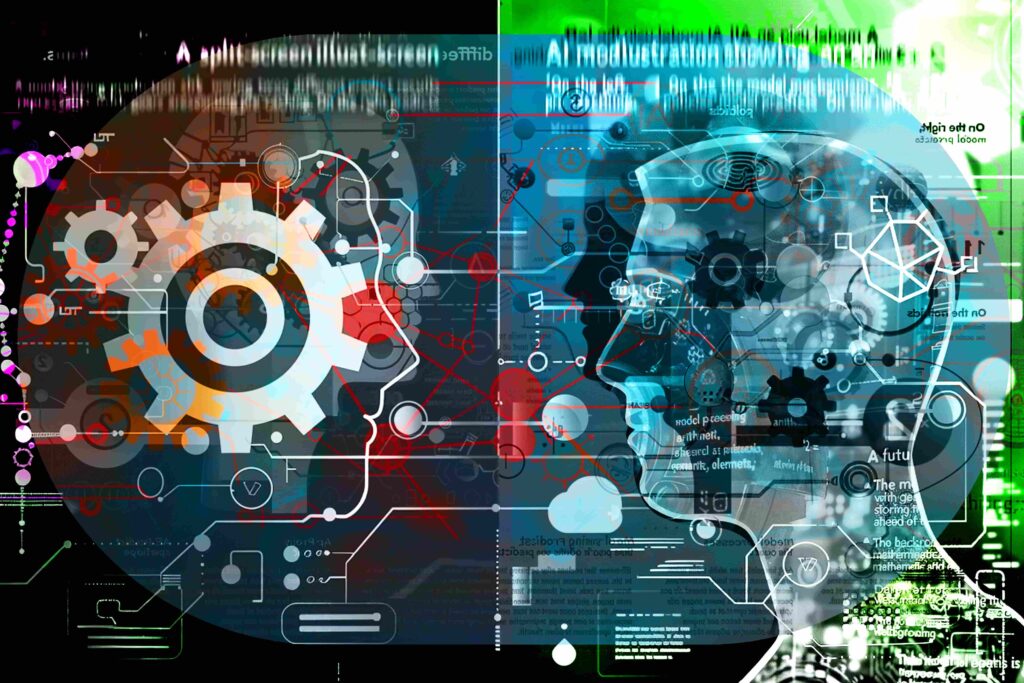
Examples of Pre-caching and Breadcrumbs in Action
Pre-caching
Consider a language model trained on a dataset of simple arithmetic problems. When given the input “2 + 3 =,” the model needs to predict the next token, which should be “5.” In this case, the model pre-caches the information that “2 + 3” will result in “5” even before seeing the “=” symbol. Here, the model computes and stores intermediate arithmetic results in advance, ensuring that it can predict the correct answer once the full equation is presented. This pre-caching behavior is crucial in synthetic data settings where specific future outcomes need preparation.
Breadcrumbs
Now, consider a language model trained on natural language text, such as a news article. When the model processes the sentence, “The stock market saw a significant rise today as investors showed confidence in the new economic policies,” it might need to predict the next word “policies” after reading “new economic.” Here, the breadcrumbs hypothesis is at play. The model uses the context from the current and preceding words to make an informed prediction. The features relevant to “new” and “economic” are naturally beneficial for predicting “policies” without deliberate preparation, as they all relate to the same context.
In the arithmetic example, the model benefits from pre-caching because it needs to prepare specific future outcomes based on the current input. In contrast, the news article example showcases the breadcrumbs hypothesis, where relevant features at the current time step (e.g., “new” and “economic”) inherently aid future predictions (e.g., “policies”) without additional pre-computation.
Conclusion
When performing gradient descent, the off-diagonal terms in the gradient of the expected loss with respect to the model’s parameters reveal how weights at one position influence predictions at future positions. This insight underpins the distinction between myopic and non-myopic models, where myopic models prioritize immediate predictions over future ones.
The study provides evidence that while transformers do pre-cache information in synthetic tasks, in natural language settings, they likely operate under the breadcrumbs hypothesis, using features relevant to both current and future tokens without deliberate preparation. This understanding enhances our comprehension of how language models process and anticipate linguistic input, drawing a fascinating parallel between human and artificial cognitive processes.
Let us know your thoughts! Sign up for a Mindplex account now, join our Telegram, or follow us on Twitter.
The Future of Lifelike Audio-Driven Talking Faces: Microsoft Research Asia and VASA-1
In the digital age where multimedia and communication technologies continue to impress the masses with their dramatic advancement, Microsoft Research Asia introduces VASA-1, a transformative model designed to generate real-time, lifelike talking faces from a single static image and a speech audio clip. This technology pushes the boundaries of audio-visual synchronization and enhances the realism and effectiveness of human-computer interactions across various domains.
Comprehensive Overview of VASA-1 Technology
VASA-1 stands out for its ability to produce synchronized lip movements, natural facial expressions, and head movements.
Core Innovations:
- Holistic Facial Dynamics Modeling: Unlike traditional methods that treat different facial features separately, VASA-1 models all aspects of facial dynamics—including lip movements, eye gaze, and other expressions—as a single latent variable. This approach ensures seamless integration and fluid motion, contributing to the model’s lifelike outputs.
- Diffusion Transformer Model: At the heart of VASA-1’s capability is a Diffusion Transformer model that enhances the generative process. This model is trained on a vast dataset of face videos, allowing it to accurately replicate human-like nuances in facial dynamics and head movements based on audio inputs alone.
Expanding the Horizons of Digital Communication
VASA-1’s application potential is vast and varied:
- Enhanced Accessibility: VASA-1 can facilitate more expressive interactions for individuals with communicative impairments, providing a platform for clearer and more empathetic communication.
- Education and Learning: In educational settings, VASA-1 can serve as an interactive tool for AI-driven tutoring, capable of delivering instructional content with engaging and responsive facial expressions that mimic human tutors.
- Therapeutic Use: The technology also holds promise in healthcare, particularly in therapeutic settings where lifelike avatars can offer social interaction and emotional support to patients.
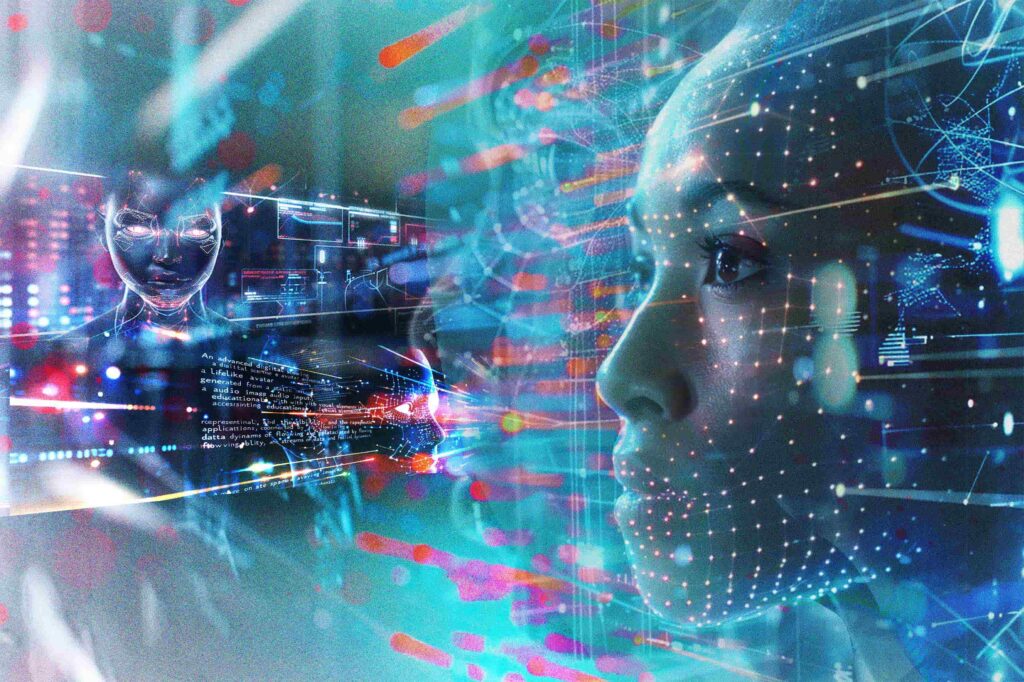
Technical Specifications and Performance Metrics
VASA-1 delivers high-resolution videos (512×512 pixels) at up to 40 frames per second, with negligible starting latency, making it ideal for real-time applications. The model’s efficiency and quality are evidenced by its performance across several newly developed metrics for evaluating lifelike digital animations, where it significantly outperforms existing methods.
Future Directions and Ethical Considerations
Looking ahead, the development team aims to refine VASA-1’s capabilities by:
- Broadening Emotional Range: Incorporating a wider array of emotions and talking styles to cover more nuanced interactions.
- Full-Body Dynamics: Expanding the model to include full-body dynamics for complete digital persona creation.
- Multi-Lingual and Non-Speech Sounds: Enhancing the model’s responsiveness to a broader spectrum of audio inputs, including multiple languages and non-verbal sounds.
The ongoing development will focus on safeguarding against misuse, particularly in impersonation or deceptive uses.
Conclusion
VASA-1 by Microsoft Research Asia represents a significant step forward in the convergence of AI and human interaction. By delivering real-time, high-fidelity talking faces, VASA-1 opens new pathways for making digital interactions as rich and engaging as face-to-face conversations. It promises not only to transform user experiences but also to foster connections that transcend the digital divide.
Let us know your thoughts! Sign up for a Mindplex account now, join our Telegram, or follow us on Twitter.
Scaling Decentralized AI Sustainably and Securely: SuperAI Series – Part 2
The Rise of Graph Foundation Models: How Large Language Models are Revolutionizing GML
The world around us is inherently interconnected. Social networks connect people, molecules form chemical compounds, and knowledge graphs organize information. Capturing these relationships is crucial for various tasks, from drug discovery to recommender systems. This is where Graph Machine Learning (GML) comes in. GML excels at analyzing these interconnected structures, called graphs, to extract insights and make predictions.
Despite its strengths, traditional Graph Machine Learning (GML) struggles with limited data and diverse real-world graphs. Large Language Models (LLMs), on the other hand, excel at learning complex patterns from massive amounts of text data. This exciting convergence paves the way for Graph Foundation Models (GFMs), a promising new direction that merges GML’s graph processing with LLMs’ language understanding, potentially revolutionizing how we handle complex data.
Graph ML has progressed from traditional algorithms to advanced models like Graph Neural Networks (GNNs) that learn representations directly from graph data. This evolution has set the stage for integrating LLMs to further enhance Graph ML’s capabilities, providing new methods to handle large and complex graph structures.
LLMs can significantly augment Graph ML by leveraging their superior language understanding capabilities. Techniques such as prompt-based learning, where LLMs are given graph-related tasks, show great promise.
The Power of LLMs in Graph Learning
LLMs bring several advantages to the table:
- Improved Feature Quality: LLMs can analyze textual descriptions of graphs, extracting rich features that capture the relationships and context within the data. This can significantly improve the quality of features used by GML models, leading to more accurate predictions.
- Addressing Limited Labeled Data: Labeling data for graph tasks can be expensive and time-consuming. LLMs can leverage their pre-trained knowledge to learn from unlabeled graphs, alleviating the need for vast amounts of labeled data.
- Tackling Graph Heterogeneity: Real-world graphs come in all shapes and sizes, with varying densities and node/edge types. LLMs, with their flexible learning capabilities, can potentially adapt to this heterogeneity and perform well on diverse graph structures.

Graphs Empowering LLMs
The benefits are not one-sided. Graphs can also empower LLMs by providing a structured knowledge representation for pre-training and inference. This allows LLMs to not only process textual data but also reason about the relationships within a graph, leading to a more comprehensive understanding of the information.
Applications of LLM-Enhanced GML
The potential applications of LLM-enhanced GML are vast and span various domains:
- Recommender Systems: Imagine a recommender system that not only considers your past purchases but also understands the relationships between different products based on reviews and product descriptions. LLM-enhanced GML can achieve this, leading to more personalized and accurate recommendations.
- Knowledge Graphs: Knowledge graphs store information about entities and their relationships. LLMs can improve reasoning and question answering tasks on knowledge graphs by leveraging their understanding of language and the structured knowledge within the graph.
- Drug Discovery: Molecules can be represented as graphs, where nodes are atoms and edges are bonds. LLM-enhanced GML can analyze these graphs to identify potential drug candidates or predict their properties.
- Robot Task Planning: Robots need to understand their environment to perform tasks. By integrating scene graphs (representing objects and their spatial relationships) with LLMs, robots can generate more efficient and safe task plans.
Looking Forward: Challenges and Opportunities
While the potential of LLM-enhanced GML is exciting, there are challenges to address:
- Generalization and Transferability: Can models trained on one type of graph perform well on another? Future research needs to focus on developing models that generalize across different graph domains.
- Multi-modal Graph Learning: Many real-world graphs contain not just text data but also images and videos. Research on incorporating these multi-modal data formats into LLM-enhanced GML is crucial.
- Trustworthy Models: Ensuring the robustness, explainability, fairness, and privacy of LLM-enhanced GML models is essential for their responsible deployment in critical applications.
- Efficiency: LLM computations can be resource-intensive. Developing more efficient LLM architectures specifically tailored for graph tasks is necessary for practical applications.
Conclusion
The intersection of GML and LLMs opens a new chapter in graph learning. By combining the strengths of both approaches, GFMs have the potential to revolutionize various fields that rely on analyzing interconnected data. While challenges remain, ongoing research efforts hold the promise of unlocking the full potential of this exciting new direction.
Let us know your thoughts! Sign up for a Mindplex account now, join our Telegram, or follow us on Twitter.




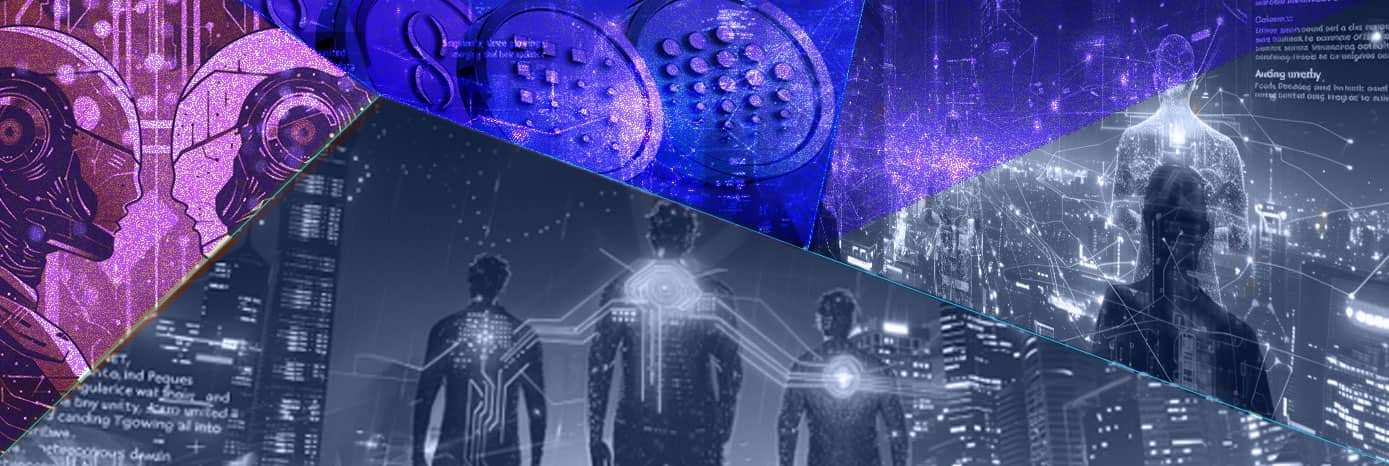


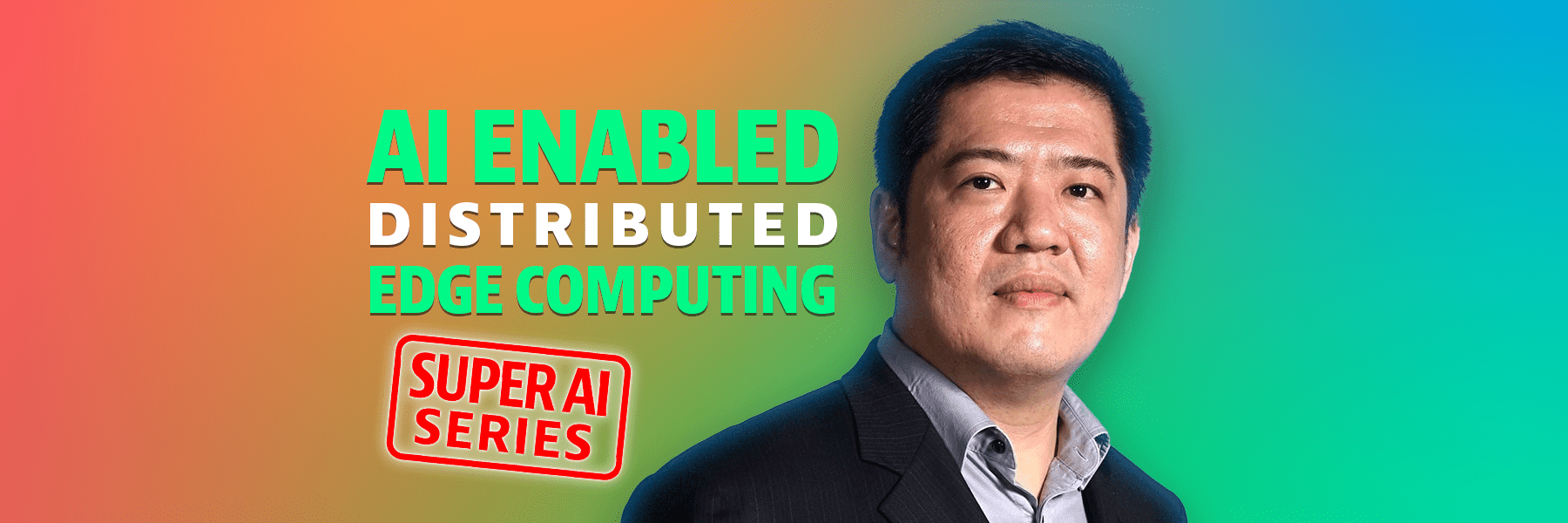



.png)

.png)


.png)